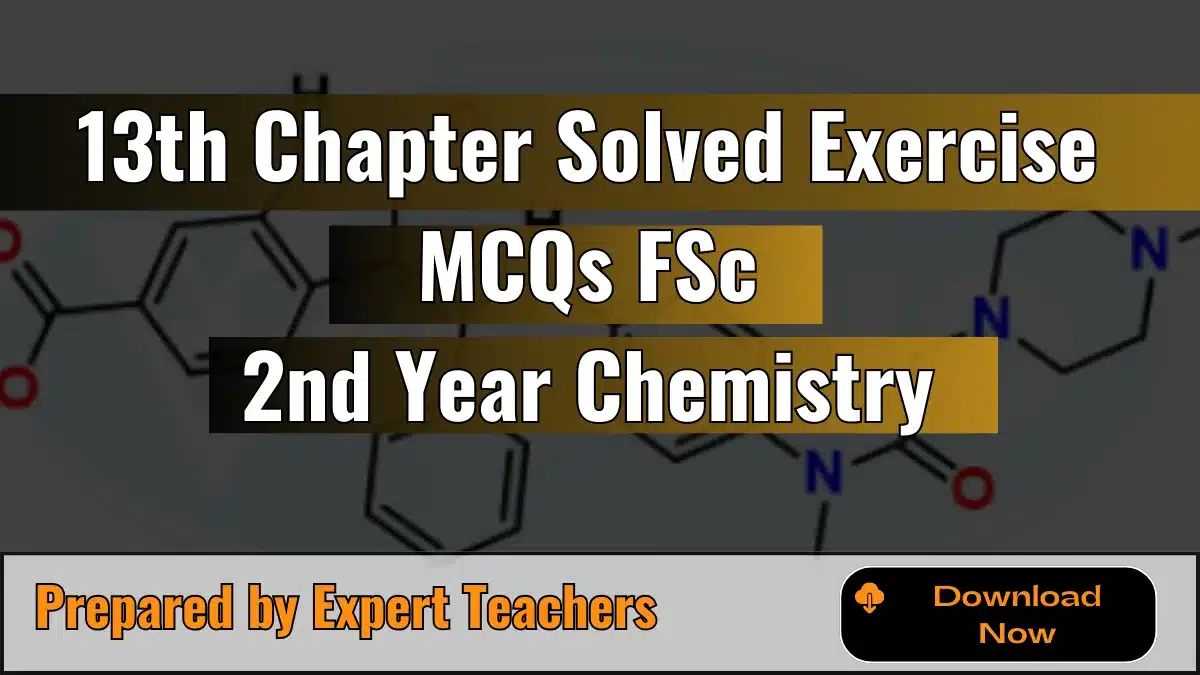Fourth Chapter Solved Exercise MCQs of FSC First Year Chemistry
The 4th chapter Solved Exercise MCQs of FSC 1st-year Chemistry offers a comprehensive collection of multiple-choice questions with answers. Each question is accompanied by a short explanation to clarify the correct choice. These solutions aim to assist students in exam preparation by simplifying complex concepts and building a strong foundation for success.
Fourth chapter solved MCQs with explanation
1.Ionic solids are characterized by:
(a) low melting points
(b) good conductivity in solid state
(c) high vapor pressures
(d) solubility in polar solvents
Explanation: The correct answer is (d). Because solubility in polar solvents. Ionic solids dissolve in polar solvents because the polar molecules can separate the ions. They usually have high melting points, poor conductivity in solid form, and low vapor pressures.
2. Amorphous solids:
(a) have sharp melting points
(b) undergo clean cleavage when cut with a knife
(c) have perfect arrangement of atoms
(d) can possess small regions of orderly arrangement of atoms
Explanation: The correct answer is (d). Because Amorphous solids:
- Do not melt at a sharp temperature (they soften gradually).
- Do not break cleanly (they fracture irregularly).
- Do not have a regular atomic arrangement (they lack long-range order).
- Can have small areas with some order.
3. The molecules of CO₂ in dry ice form:
(a) ionic crystals
(b) covalent crystals
(c) molecular crystals
(d) any type of crystals
Explanation: The correct answer is (c). Because In dry ice, the CO₂ molecules form a type of solid called molecular crystals. This means that the CO₂ molecules are held together by weak forces, not strong bonds or ions. This is different from ionic crystals (made of ions) or covalent crystals (made of atoms joined by strong bonds).
4. Which of the following is a pseudo solid?
(a) CaF₂
(b) Glass
(c) NaCl
(d) All
Explanation: The correct answer is (b) because:
- Glass has an amorphous structure, meaning its molecules are not arranged in a regular, repeating pattern like in true solids. Instead, glass has a disordered arrangement, similar to liquids, but it behaves like a solid over time due to its rigidity.
- CaF₂ (Calcium Fluoride) and NaCl (Sodium Chloride) are true solids with a well-ordered crystalline structure.
5. Diamond is a bad conductor because:
(a) it has a tight structure
(b) it has a high density
(c) there are no free electrons present in the crystal of diamond to conduct electricity
(d) it is transparent to light
Explanation: The correct answer is (c). Because In diamond, the carbon atoms are tightly bonded in a crystal lattice structure with no free electrons available to move and carry an electric current. This lack of free electrons means that diamond does not conduct electricity effectively.







Leave a Reply